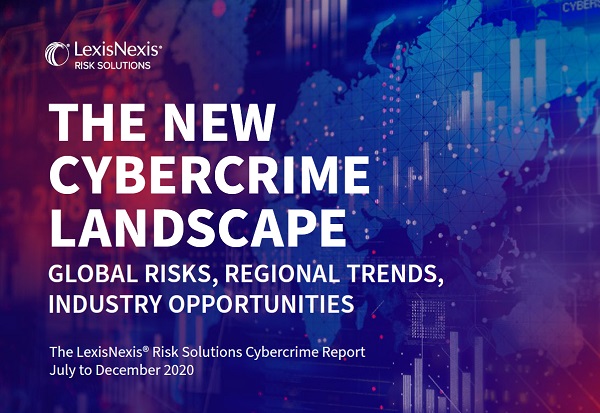UNPRECEDENTED GLOBAL CHANGE CREATES NEW OPPORTUNITIES FOR CYBERCRIMINALS
During a year of irrevocable change, cybercriminals have remained consistent. Looking for new opportunities, isolating targets that will deliver the most lucrative gains, and heaping additional pressure on global businesses that were forced to adapt and evolve in the face of unprecedented demand.
Several new lines of credit were heavily targeted. Fraudsters also preyed on consumer anxiety, with pandemic-related scams that offered products and services that were either in demand, or in short supply. Pymnts.com, for
example, reported that fraud rates increased 55% since the beginning of the pandemic, while Experian claimed that UK Fraud rates rose 33% during the first COVID-19 lockdown in April.
This growth in fraud has not been recorded across all digital businesses however; many established platforms have actually reported a fall in attack levels during 2020. Organizations that are part of the LexisNexis® Digital Identity Network® have, for example, seen a significant reduction in attack rates year-over-year. Well established, layered fraud defenses seem to be a significant deterrent for cybercriminals, who instead appear to have turned their attention to new opportunities that have been created by the global pandemic.
Despite reduced attack rates recorded across businesses in the Digital Identity Network®, pernicious attack vectors persist:
- Automated bot attacks continue to be widespread, recorded across global regions and attacking a wide variety of industries and use cases to mass test identity credentials. They offer fraudsters a cheap, quick and effective method of initial attack.
- Likewise, new account creations continue to see high attack rates, representing a key point of entry for fraudsters looking to monetize credentials harvested from data breaches.
Regardless of the many uncertainties businesses face in 2021, they can be sure that their end users will continue to demand access to goods and services wherever and whenever they choose:
- eCommerce merchants, for example, must look to prioritize holistic, omni-channel customer experiences. Routes to purchase are increasingly converging as in-store experiences are being either replaced by, or combined with, digital offerings. Customer recognition across this entire journey becomes more critical than ever.
- Likewise, the diversification of digital payment solutions that are evolving to meet growing consumer demand, places the onus on reliable authentication methods that can detect the use of stolen and spoofed credentials.
In this landscape of rapid change, digital identity intelligence emerges as one of the most precious assets for both consumers and businesses. Online digital identities can adapt and evolve as each individual consumer transacts online, building a digital footprint of their behavior, transaction history and device intelligence. When this intelligence is crowdsourced across global digital businesses, and updated in near real time, it offers an unparalleled view of trust and risk. For consumers, this means a low-friction online experience as businesses are better able to recognize trusted, returning customers.
At the same time, organizations can identify behavior that deviates from this trusted profile. When layered with physical identity and authentication solutions, as well as behavioral biometrics data, this approach can provide a robust, and future-proofed, fraud strategy.


